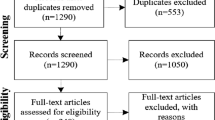Abstract
Mobile applications have been used for multiple purposes from entertainment to critical domains. As a consequence, the quality of mobile applications has become a crucial aspect, for instance, by promoting the use of testing as a quality assurance practice. The diversity of mobile platforms is pervaded by several resources related to communication capabilities, sensors, and user-controlled options. As a result, applications can present unexpected behaviors and resource interactions can introduce failures that manifest themselves in specific resource combinations. These failures can compromise the mobile application quality and harm the user experience. We evaluate the failure-detection capability and effectiveness of five sampling testing strategies (Random, One-Enabled, One-Disabled, Most-Enabled-Disabled, and Pairwise) in the context of resource related failures in 15 mobile applications. We focus on 14 common resources of the Android platform and analyze the resource interactions more likely to cause failures. Random had great percentages of failing test cases, followed by One-Enabled, Most-Enabled-Disabled, and Pairwise. We observe that One-Enabled and One-Disabled are the most effective testing strategies for six and four applications, respectively. Surprisingly, resource pairs have more influence on failures than other resource combinations, varying widely among the applications.







Similar content being viewed by others
Data availability
The data used in this study is available in a public repository at https://eulerhm.github.io/samplingapptest.
Notes
In this work, GPS and network are related to Location, and Wi-Fi/Mobile Data
In this work, we do not deal with internal settings of applications (https://developer.android.com/guide/topics/ui/settings)
A record include a set of resource states and the value of the Support achieved
Two Android APIs are mentioned in Section 3.5
References
Abal, I., Brabrand, C., & Wasowski, A. (2014). 42 variability bugs in the Linux Kernel: A qualitative analysis. In Proceedings of the ACM/IEEE International Conference on Automated Software Engineering (ASE) (p. 421–432).
Agrawal, R., Imieliński, T., & Swami, A. (1993). Mining association rules between sets of items in large databases. In Proceedings of the 1993 ACM SIGMOD International Conference on Management of Data SIGMOD ’93 (p. 207–216). New York, NY, USA: Association for Computing Machinery.
Agrawal, R., & Srikant, R. (1994). Fast algorithms for mining association rules. In Proceedings of the International Conference on Very Large Databases (VLDB) (pp. 487–499). Citeseer volume 1215.
Al-Hajjaji, M., Krieter, S., Thüm, T., Lochau, M., & Saake, G. (2016). Incling: efficient product-line testing using incremental pairwise sampling. ACM SIGPLAN Notices, 52, 144–155.
Amalfitano, D., Amatucci, N., Memon, A. M., Tramontana, P., & Fasolino, A. R. (2017). A general framework for comparing automatic testing techniques of android mobile apps. Journal of Systems and Software, 125, 322–343.
Apel, S., Batory, D., Kastner, C., & Saake, G. (2013a). Feature-oriented software product Lines. Berlin/Heidelberg: Springer.
Apel, S., Kolesnikov, S., Siegmund, N., Kästner, C., & Garvin, B. (2013b). Exploring feature interactions in the wild: The new feature-interaction challenge. In Proceedings of the 5th International Workshop on Feature-Oriented Software Development (FOSD).
Barr, E., Harman, M., McMinn, P., Shahbaz, M., & Yoo, S. (2015). The oracle problem in software testing: a survey. IEEE Transactions on Software Engineering, 41, 507–525.
Bertolino, A., Angelis, G.D., Gallego, M., García, B., Gortázar, F., Lonetti, F., & Marchetti, E. (2019). A systematic review on cloud testing. ACM Computing Surveys, 52.
Borges, H., & Valente, M. T. (2018). What’s in a GitHub star? understanding repository starring practices in a social coding platform. Journal of Systems and Software, 146, 112–129.
Bowen, T. F., Dworack, F., Chow, C., Griffeth, N., Herman, G. E., & Lin, Y. -J. (1989). The feature interaction problem in telecommunications systems. In Proceedings of the 7th International Conference on Software Engineering for Telecommunication Switching Systems (SETSS) (pp. 59–62).
Cai, H., & Ryder, B. (2020). A longitudinal study of application structure and behaviors in Android. IEEE Transactions on Software Engineering, 47, 2934–2955.
Coelho, J., Valente, M. T., Milen, L., & Silva, L. L. (2020). Is this github project maintained? Measuring the level of maintenance activity of open-source projects. Information and Software Technology, 122, 106274.
Cohen, M. B., Dwyer, M. B., & Shi, J. (2007). Interaction testing of highly-configurable systems in the presence of constraints. In Proceedings of the ACM SIGSOFT International Symposium on Software Testing and Analysis (ISSTA) (p. 129–139).
Escobar-Velásquez, C., Linares-Vásquez, M., Bavota, G., Tufano, M., Moran, K., Di Penta, M., Vendome, C., Bernal-Cárdenas, C., & Poshyvanyk, D. (2020). Enabling mutant generation for open- and closed-source Android apps. IEEE Transactions on Software Engineering (TSE), 48, 186–208.
Ferreira, F., Vale, G., Diniz, J. P., & Figueiredo, E. (2021). Evaluating T-wise testing strategies in a community-wide dataset of configurable software systems. Journal of Systems and Software (JSS), (p. 110990).
Galindo, J. A., Turner, H., Benavides, D., & White, J. (2016). Testing variability-intensive systems using automated analysis: an application to Android. Software Quality Journal (SQJ), 24, 365–405.
Hornik, K., Grün, B., & Hahsler, M. (2005). arules-a computational environment for mining association rules and frequent item sets. Journal of Statistical Software, 14, 1–25.
Júnior, M. C., Amalfitano, D., Garcés, L., Fasolino, A. R., Andrade, S. A., & Delamaro, M. (2022). Dynamic testing techniques of non-functional requirements in mobile apps: A systematic mapping study. ACM Computing Surveys (CSUR), 54, 1–38.
Kong, P., Li, L., Gao, J., Liu, K., Bissyandé, T. F., & Klein, J. (2018). Automated testing of Android apps: A systematic literature review. IEEE Transactions on Reliability, 68, 45–66.
Lam, W., Winter, S., Astorga, A., Stodden, V., & Marinov, D. (2020). Understanding reproducibility and characteristics of flaky tests through test reruns in Java projects. In ISSRE 2020: 31st IEEE International Conference on Software Reliability Engineering (pp. 403–413).
Luo, C., Goncalves, J., Velloso, E., & Kostakos, V. (2020). A survey of context simulation for testing mobile context-aware applications. ACM Computing Surveys (CSUR), 53, 1–39.
Lu, Y., Pan, M., Zhai, J., Zhang, T., & Li, X. (2019). Preference-wise testing for Android applications. In Proceedings of the 2019 27th ACM Joint Meeting on European Software Engineering Conference and Symposium on the Foundations of Software Engineering (ESEC/FSE) (pp. 268–278).
Marinho, E. H., Diniz, J. P., Ferreira, F., & Figueiredo, E. (2021). Evaluating sensor interaction failures in mobile applications. In International Conference on the Quality of Information and Communications Technology (QUATIC) (pp. 49–63). Springer.
Mateus, B. G., & Martinez, M. (2019). An empirical study on quality of Android applications written in Kotlin language. Empirical Software Engineering, 24, 3356–3393.
Medeiros, F., Kästner, C., Ribeiro, M., Gheyi, R., & Apel, S. (2016). A comparison of 10 sampling algorithms for configurable systems. In 2016 IEEE/ACM 38th International Conference on Software Engineering (ICSE) (pp. 643–654). IEEE.
Nie, C., & Leung, H. (2011). A survey of combinatorial testing. ACM Computing Surveys (CSUR), 43, 1–29.
Parry, O., Kapfhammer, G.M., Hilton, M., & McMinn, P. (2021). A survey of flaky tests. ACM Transactions on Software Engineering and Methodology (TOSEM), 31.
Pecorelli, F., Catolino, G., Ferrucci, F., De Lucia, A., & Palomba, F. (2022). Software testing and Android applications: a large-scale empirical study. Empirical Software Engineering, 27.
Silva, D. B., Eler, M. M., Durelli, V. H., & Endo, A. T. (2018). Characterizing mobile apps from a source and test code viewpoint. Information and Software Technnology, 101, 32–50.
Souto, S., d’Amorim, M., & Gheyi, R. (2017). Balancing soundness and efficiency for practical testing of configurable systems. In 2017 IEEE/ACM 39th International Conference on Software Engineering (ICSE) (pp. 632–642). IEEE.
Sun, J., Su, T., Li, J., Dong, Z., Pu, G., Xie, T., & Su, Z. (2021). Understanding and finding system setting-related defects in Android apps. In Proceedings of the ACM SIGSOFT International Symposium on Software Testing and Analysis (ISSTA) (pp. 204–215).
Thüm, T., Kästner, C., Benduhn, F., Meinicke, J., Saake, G., & Leich, T. (2014). FeatureIDE: An extensible framework for feature-oriented software development. Science of Computer Programming, 79, 70–85.
Tramontana, P., Amalfitano, D., Amatucci, N., & Fasolino, A. R. (2019). Automated functional testing of mobile applications: a systematic mapping study. Software Quality Journal (SQJ), 27, 149–201.
Vilkomir, S. (2018). Multi-device coverage testing of mobile applications. Software Quality Journal (SQJ), 26, 197–215.
Villanes, I. K., Endo, A. T., & Dias-Neto, A. C. (2022). A multivocal literature mapping on mobile compatibility testing. International Journal of Computer Applications in Technology, 69, 173–192.
Wei, L., Liu, Y., Cheung, S. -C., Huang, H., Lu, X., & Liu, X. (2018). Understanding and detecting fragmentation-induced compatibility issues for Android apps. IEEE Transactions on Software Engineering (TSE), 46, 1176–1199.
Wohlin, C., Runeson, P., Host, M., Ohlsson, M. C., Regnell, B., & Wesslen, A. (2012). Experimentation in Software Engineering. Berlin / Heidelberg: Springer.
Funding
This work was partially supported by Brazilian funding agencies: CAPES and CNPq.
Author information
Authors and Affiliations
Contributions
Euler Horta Marinho, Fischer Ferreira, and João P. Diniz were responsible for the data collection. All authors were involved with data analysis as well as writing and reviewing the manuscript.
Corresponding author
Ethics declarations
Conflict of interest
The authors declare no competing interests.
Additional information
Publisher's Note
Springer Nature remains neutral with regard to jurisdictional claims in published maps and institutional affiliations.
Rights and permissions
Springer Nature or its licensor (e.g. a society or other partner) holds exclusive rights to this article under a publishing agreement with the author(s) or other rightsholder(s); author self-archiving of the accepted manuscript version of this article is solely governed by the terms of such publishing agreement and applicable law.
About this article
Cite this article
Marinho, E.H., Ferreira, F., Diniz, J.P. et al. Evaluating testing strategies for resource related failures in mobile applications. Software Qual J 31, 1121–1147 (2023). https://doi.org/10.1007/s11219-023-09627-3
Accepted:
Published:
Issue Date:
DOI: https://doi.org/10.1007/s11219-023-09627-3




